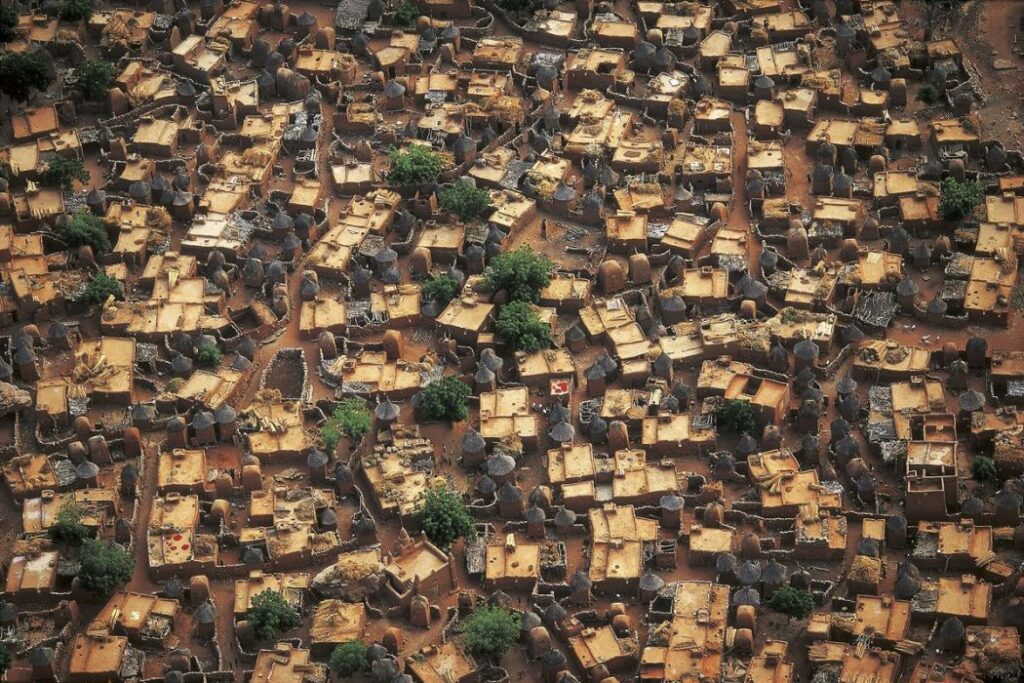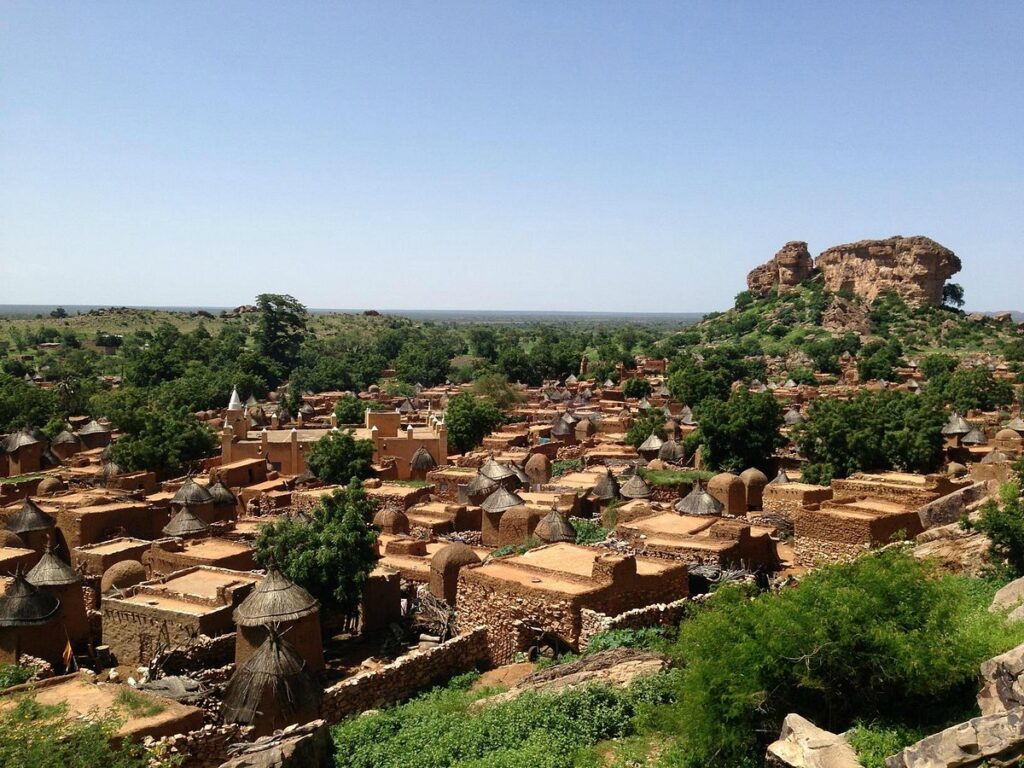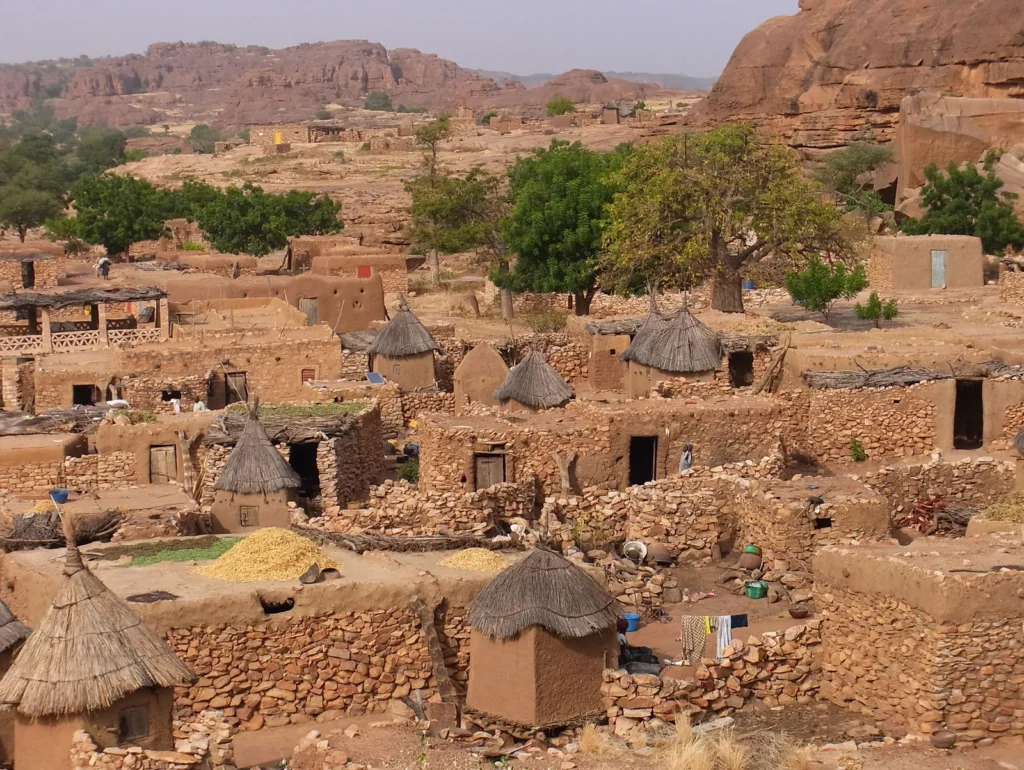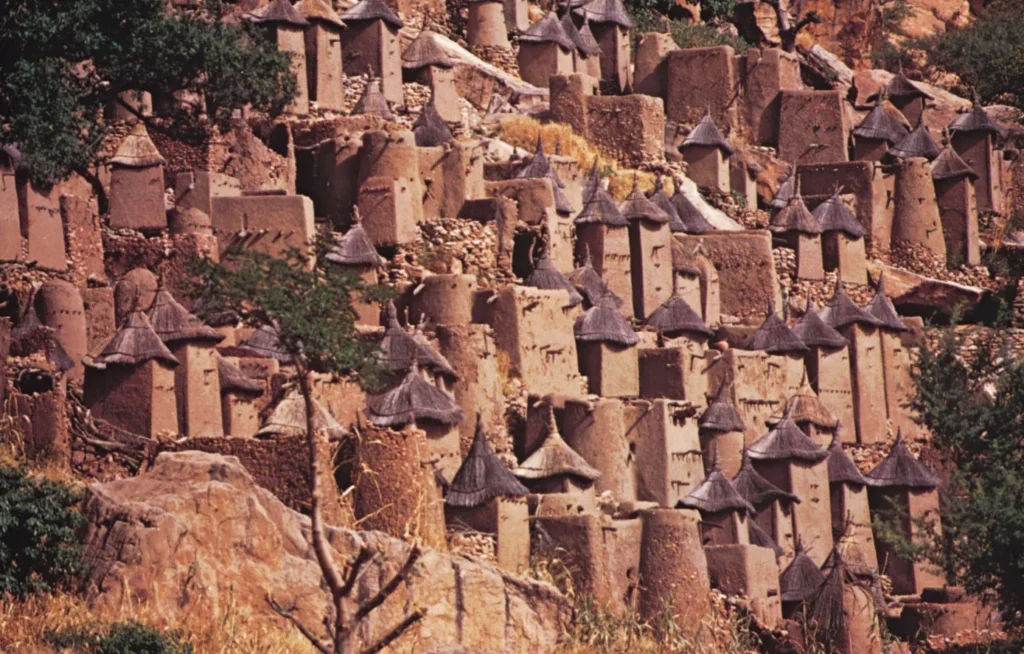Tucked away in the rugged cliffs of the Bandiagara Escarpment in central Mali, the Dogon villages stand as some of West Africa’s most captivating cultural and natural treasures. For centuries, the Dogon people have preserved a unique way of life, deeply connected to their environment, spirituality, and ancestral heritage. Visiting the Dogon villages is not just a trip; it’s a journey back in time, a chance to witness traditions that have survived colonization, conflict, and modern pressures.
Here’s what you need to know before embarking on this extraordinary adventure.
The Land and Its People

The Bandiagara Escarpment—a sandstone cliff stretching over 150 kilometers—forms a dramatic backdrop for the Dogon settlements. These villages cling to the cliffs and dot the plains below, blending harmoniously with the landscape. The Dogon have lived here for centuries, mastering agriculture, architecture, and social structures adapted to the harsh Sahel environment.
The Dogon people are renowned for their rich cosmology, vibrant masquerades, and intricate wooden sculptures. Their culture is deeply symbolic, with myths explaining the creation of the world, the stars, and the human soul. Masks used in ceremonial dances embody ancestral spirits, and festivals mark seasonal cycles and rites of passage.
Planning Your Visit
Getting to the Dogon villages requires some planning. The nearest major city is Bamako, Mali’s capital, followed by a journey to Mopti. From Mopti, travelers typically hire 4×4 vehicles to navigate the rough roads leading to the Bandiagara region.
Guided tours are highly recommended—not only for logistical ease but also to ensure respectful cultural interactions. Local guides provide invaluable insight into Dogon history, social customs, and natural landmarks.
What to Expect in the Villages

Visiting a Dogon village feels like stepping into a living museum. The architecture is striking: mud-brick houses with flat roofs, granaries topped with pointed thatched cones, and granaries raised on wooden stilts to protect stored grain.
Villagers are often welcoming, eager to share their stories and traditions. You might witness the sigui festival, held every 60 years, or smaller celebrations featuring the dama masked dances, performed to honor the deceased and ensure communal harmony.
Artisans create beautifully carved wooden statues and masks, which are not mere souvenirs but spiritual objects imbued with meaning. Photography is usually welcome but always ask permission first.
Cultural Sensitivity and Respect
Respecting Dogon customs is essential. Visitors should dress modestly, avoid intrusive behavior, and be mindful of local taboos. Remember, the Dogon way of life is sacred, and their ceremonies are not performances for tourists.
Engage with the community openly but respectfully. Supporting local artisans by purchasing crafts directly helps sustain the economy without exploiting cultural heritage.
Challenges and Rewards

Traveling to the Dogon villages can be challenging. Roads are rough, accommodation is basic, and amenities limited. Mali’s political instability also means travelers should stay updated on security advisories.
But the rewards far outweigh these hurdles. Experiencing Dogon culture firsthand is transformative—offering deep connection to humanity’s diverse expressions and resilience.
Environmental and Social Considerations
The Dogon region faces environmental pressures, including soil erosion and climate change impacts. Responsible travel includes minimizing waste, supporting sustainable practices, and contributing to community-led conservation efforts.
Engaging with local NGOs or community projects can enrich your visit and provide tangible benefits to the people you meet.
Final Thoughts
Visiting the Dogon villages of Mali is a rare opportunity to step outside the modern world and into a timeless cultural landscape. It’s a place where history, spirituality, and human creativity intertwine in breathtaking ways.
If you’re drawn to travel that challenges, educates, and inspires, the Dogon villages await—offering a journey of discovery that stays with you long after you leave.
